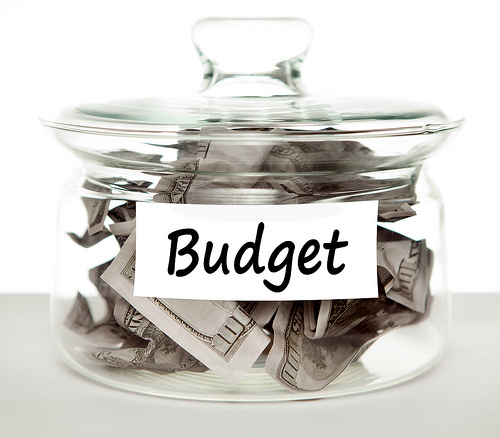
Does Your Budget Match Your Goals, Values and Dreams?
Design projects ultimately require money; not only for design, but also for construction. One of the first questions an architect is asked is “How much will it cost?” The underlying questions: How much are the design fees? And, how much will the total cost of the project be?
The most precise answer is “it depends.” This answer may help, but more often it confounds. What does “it depends” mean? It means quality, budget, and timing all affect each other.
In an initial interview with a client, the architect most likely will ask “What is your budget? or “What are you thinking of spending?” She will talk with the client about what she would like to achieve. Why does the architect ask this? Does she just want to max out the budget? Up-sell the project? Or, is she just doing some research?
Architects ask these questions because we respect a client’s budget and time, and also want to make sure that the scope of work and quality, along with the budget, are in alignment. We want to quickly set expectations. Since Seattle is an especially expensive part of the country, and if someone is not familiar with local costs, the construction expenses to build a project can be surprising.
As a client, something to remember is that the architect and the contractor are only as familiar with your dreams and goals to the extent that you share your ideas. Why are you doing the project? We don’t know what your long term plans are (retirement for example) and how this project fits into your plan. Along with your expectations, you need to determine your budget so all elements can be taken under consideration from the very beginning.
 If you tell your architect that your budget is 200k, but in reality it is 400k, you may not get the scope of work, or level of quality, that you are expecting until you disclose that your budget is truly 400k. The opposite holds true as well. If you tell your architect that your budget is 500k and it really is 350k, there will be a discrepancy (or disproportion or imbalance) in quality and scope that will ultimately be reflected in project pricing. Have you resolved, no matter the budget, how you will ultimately pay for it? Perhaps savings, stocks, loans, an inheritance, or a combination of the above? Make your financial plan and then tell your architect what your budget is in reality. Let her help guide the process. At live-work-play, we want the project to be sustainable, and that includes financial sustainability!
If you tell your architect that your budget is 200k, but in reality it is 400k, you may not get the scope of work, or level of quality, that you are expecting until you disclose that your budget is truly 400k. The opposite holds true as well. If you tell your architect that your budget is 500k and it really is 350k, there will be a discrepancy (or disproportion or imbalance) in quality and scope that will ultimately be reflected in project pricing. Have you resolved, no matter the budget, how you will ultimately pay for it? Perhaps savings, stocks, loans, an inheritance, or a combination of the above? Make your financial plan and then tell your architect what your budget is in reality. Let her help guide the process. At live-work-play, we want the project to be sustainable, and that includes financial sustainability!
Another thought to keep in mind, for custom residential projects, is often the costs will shift while the project is under construction. Why does this happen? There are a number of reasons. Unanticipated findings, especially at the beginning, can occur: there can be unexpected ground water; an old decommissioned septic or oil tank may be in the way of excavation and footings; or you may have to add engineered soils for stabilization. In a remodeling project, framing that is uncovered may be so rotten it has to be replaced and repaired or perhaps a structure was framed in a non-standard way and the construction detail needs adjustment. Frequently clients say, “While you are here, could you also do this….?” Or, “We would like this more expensive finish,” rather than the less expensive one.
Since construction costs can shift, it is a good idea to expect the situation to arise and be flexible. You should have a reserve of 5 to 10% of the original cost estimate as a backup. If this isn’t planned from the forefront, you may have to ask for some value engineering (value engineering is when the construction detail is changed or the scope of work is reduced to lower cost) to parts that are not yet constructed to cover unexpected conditions. Everyone is better off with a contingency plan.
Can design fees shift also? They can, mainly in schematic design. Schematic design is the initial process where we explore many different concepts. It’s a great idea to take the time to explore during this phase, as it is much less costly than changing the design during construction (if that is even possible.) What about additional phases, can costs shift then? Once a schematic design is agreed upon, design fees will not shift very much unless revisions are needed, perhaps due to budget. (See above references to budget.)
While a pr oject is under construction, sometimes the client/owner may feel like all she is doing is writing checks and depleting her bank account. It’s important to be aware of how you are feeling about money during the course of the project. Is it stressful? Are you worried? How are you feeling about spending this amount of money on your home? Are you nervous about it or are you at peace with it? Did you completely plan how you would pay for everything? Are you staying informed, feeling on top of things, and understanding why you are spending what you are? If you are concerned, voice your concerns with your architect and contractor, but remember to respect that they are doing their best to help you achieve your dreams and goals with the project, and that sharing your real budget plays a big role in achieving that end.
oject is under construction, sometimes the client/owner may feel like all she is doing is writing checks and depleting her bank account. It’s important to be aware of how you are feeling about money during the course of the project. Is it stressful? Are you worried? How are you feeling about spending this amount of money on your home? Are you nervous about it or are you at peace with it? Did you completely plan how you would pay for everything? Are you staying informed, feeling on top of things, and understanding why you are spending what you are? If you are concerned, voice your concerns with your architect and contractor, but remember to respect that they are doing their best to help you achieve your dreams and goals with the project, and that sharing your real budget plays a big role in achieving that end.
Some further reading:
Making Peace with Money by Jerrold Mundis.

